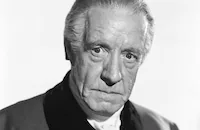The Trial of Mary Dugan

Brief Synopsis
Cast & Crew
Bayard Veiller
Norma Shearer
Lewis Stone
H. B. Warner
Raymond Hackett
Lilyan Tashman
Film Details
Technical Specs

Synopsis
Pretty Mary Dugan is placed on trial for the murder of her sugardaddy, who was found shot to death in the apartment he kept for her. Edward West, Mary's attorney, deliberately restrains himself in his cross-examination of the witnesses for the prosecution, and Mary's brother, Jimmy, who is a fledgling lawyer, strongly protests. West withdraws from the case, and Jimmy takes over his sister's defense. Jimmy puts Mary on the stand, and her subsequent testimony reveals that she had been the mistress of four successive men in order to earn enough money to put Jimmy through law school. Jimmy brings about Mary's acquittal by proving that Edward West was the man who murdered Mary's benefactor.

Director
Bayard Veiller
Cast

Norma Shearer

Lewis Stone

H. B. Warner
Raymond Hackett

Lilyan Tashman
Olive Tell
Adrienne D'ambricourt

De Witt Jennings
Wilfred North
Landers Stevens
Mary Doran
Westcott B. Clarke
Charles Moore
Claud Allister
Myra Hampton
Crew

Film Details
Technical Specs

Articles
The Trial of Mary Dugan (1929) -
By Violet LeVoit

The Trial of Mary Dugan (1929) -
Quotes
Trivia
Notes
In 1931, M-G-M produced foreign language-versions of The Trial of Mary Dugan in Spanish, French and German. For information on those films, please consult the entries for El proceso de Mary Dugan, Le procès de Mary Dugan and Mordprozess Mary Dugan. Another English-language adaptation of Bayard Veiller's play The Trial of Mary Dugan was made by M-G-M in 1941, directed by Norman Z. McLeod and starring Robert Young and Laraine Day (see AFI Catalog of Feature Films, 1941-50).














